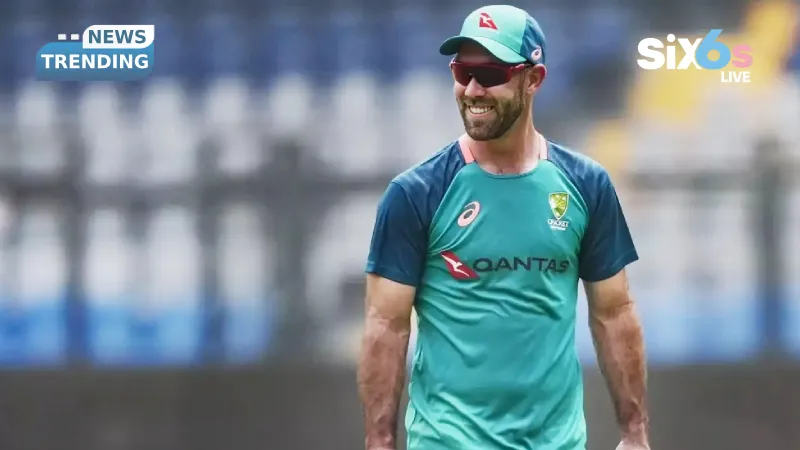India was just getting over the last of the many ghosts they had encountered during this tour when suddenly another one popped up – Glenn Maxwell. He is a maverick and, in his own unique way, can flip a game upside down at any moment, adding an unpredictable element to the Australian team, which analysts fear but fans love. The Australians are leading the series 1-0, and the addition of Maxwell creates the type of uncertainty that all the analysts dislike and all the fans enjoy.
The Maxwell Equation: Risk, Reward, and Recklessness
The return of Glenn Maxwell is more than just a “boost,” it’s an “experiment in chaos.” Glenn has not played a game since late September; however, his mere inclusion in the team changes up Australia’s lineup completely. The type of player that can smash Kuldeep Yadav for 25 in an over one day and give away his wicket the next with a poorly timed reverse scoop.
Maxwell’s T20I record versus Indian spinners showcases Maxwell’s unpredictable nature: 160+ strike rate vs Kuldeep; 5 wickets in 49 balls. He is the storm, or the calm center – never anything in between. The strategic benefit of adding Maxwell to the Australian squad is that against India’s three left-handers (Axar Patel, Abhishek Sharma, Tilak Varma).
India’s Selection Conundrum: Versatility or Vulnerability?
India faces an identity crisis. The lineup they chose for their first two T20I matches was a hybrid designed for Chennai that was then flown out to Canberra. They had included two specialists as bowlers in conditions where fast bowling would be the norm, while their other all-rounder, Shivam Dube, did virtually no bowling, which meant their attack was short of power.
Management is again faced with the usual dilemma of being a balanced team or an adaptable team. Can Rinku Singh’s pure finishing ability outdo Dube’s utility? Will Harshit Rana provide the new ball bite that India has been missing on these lively pitches? With two genuine fast bowlers who could be more than a luxury, can they become mandatory?
Conditions in Focus: Hobart’s Uncertain Science
Summer Hobart is a metaphor for cricket’s emotional state – occasionally flat, occasionally fierce. First-innings averages in February are approximately 190, while those from October-November drop to about 148. The ball grips longer, it is cooler in the air, and bowlers are suddenly heroes.
This week’s match may be defined by the toss and the first few overs. Scoring around 160 may feel like scoring 200. Teams who understand this micro-climate – i.e., when grass starts to grow, when late swing is apparent, when the middle section of an innings slows – will dictate what happens next. India has never played a T20I at Hobart, Australia understands the climate conditions there. Home advantage is minimal.
When India wants to be an “all-weather” T20 team, they are going to have to learn how to be humble in Hobart. Not aggressive with their bowling tactics, batting long, and being willing to get ugly with their batting if needed. On the other hand, Australia has gotten back a player that is as unpredictable as it gets (Maxwell), who can win you a series with one shot but also cost you one due to his own inconsistent play, both personally and for his team.
Therefore, do not look for dominance at the light show in Hobart; instead, look for development. The team that develops quicker to react to swinging, spinning, or to Maxwell’s crazy antics will begin writing the next chapter in what has been a very interesting relationship between these two teams.
Stay updated on the latest cricket news and exciting updates at Six6slive. Dive into our in-depth articles and analyses to connect with the action today!
